Mud Volcano Area
Page 1 2
Primarily, the Mud Volcano Thermal Area comprises strongly acidic mud pots and muddy hot springs. Some of them show intense boiling or even perpetual spouting, but true geyser activity hasn't been observed for decades. Much suggests that both the insufficient stability of the ground and the low deposition rate of siliceous sinter interfere with the formation of long-term stable plumbing systems.
The thermal area is much more expanded than it appears at first glance, since only the northern section can be seen from the walkways. In fact, south of Black Dragon's Caldron further thermal features are located, such as The Gumper, Moose Pool, and Obsidian Pool. Up until 2011 this area was part of the ranger-led tour around Mud Volcano, but it has been excluded from the hike thereafter and the highly active section has been closed completely. In 2008, a team of microbiologists led by James G. Elkins discovered the thermophilic bacterium Caldicellulosiruptor obsidiansis from 66 °C (151 °F) warm waters of Obsidian Pool and named it after the finding place. The bacterium is capable of fermenting cellulose and other types of sugar into alcohol and may help to enhance the industrial production of ethanol.
Only a few features are lying east and downslope of the Grand Loop Road. Probably the boiling Sulphur Caldron was the most noticeable one, both due to its dimensions and due to its strong sulfur stench. Sulphur Caldron is most likely known since 1869 and was named in 1937.
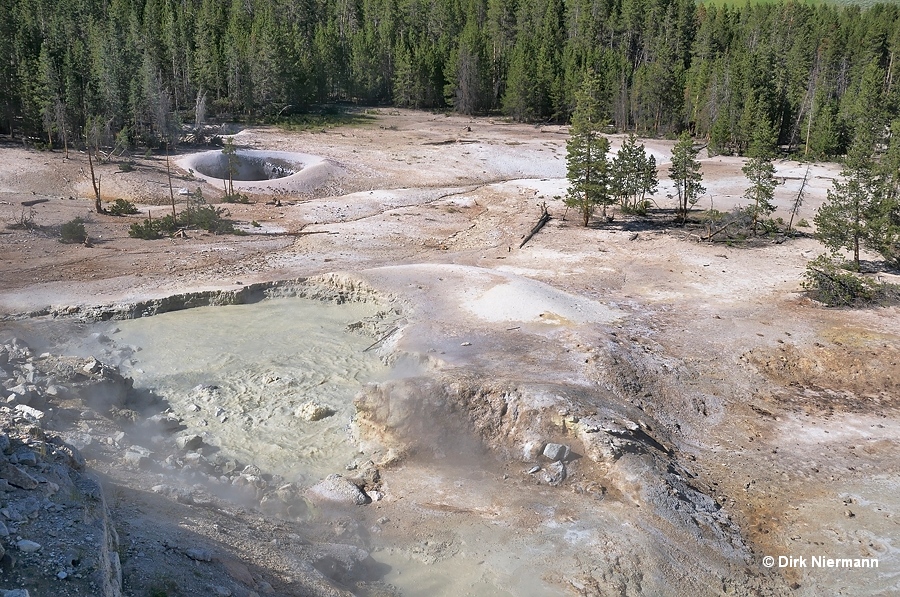
Besides Moose Pool and Mud Geyser, Sulphur Caldron is one of the classic habitats of the Mud Volcano Area where Thomas D. Brock discovered the archaeon Sulfolobus acidocaldarius at the beginning of the 1970s. In a temperature range between 55 °C and 84 °C (131 - 183 °F), Sulfolobus acidocaldarius, to the naked eye only recognizable as a grayish clouding of acidic hot springs, transforms (oxidizes) dissolved hydrogen sulfide into sulfuric acid. This leads to an acidification of the spring up to pH 1, which is as strong as gastric acid.
Nevertheless, the famous spring dried up in 2012, and the activity shifted to four new features on its southeast side.
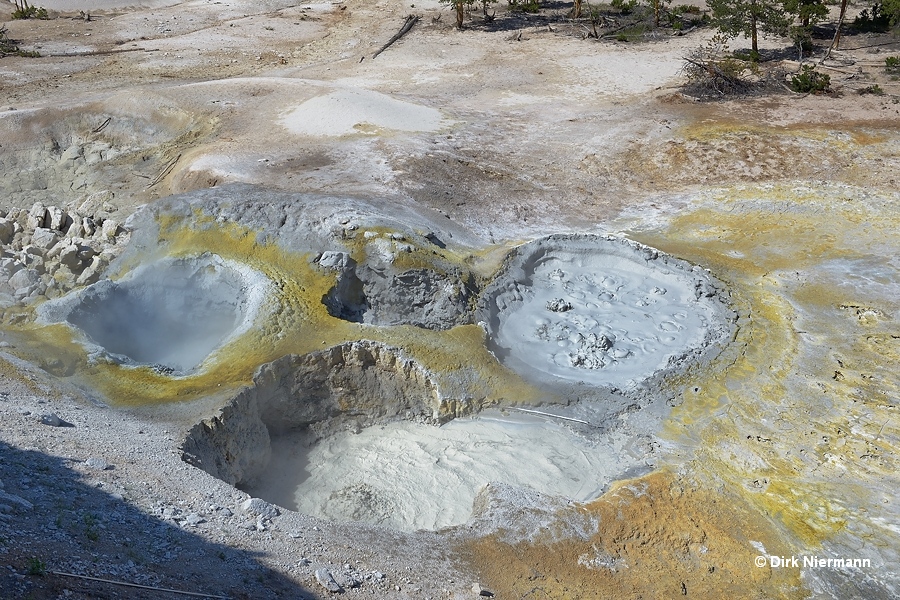
These in 2012 formed features have merged over time and continue the name Sulphur Caldron. As the next photo shows, the shifting of the mud springs to the southeast seems to go on.

South of Sulphur Caldron a little ravine opens the view down to Yellowstone River. On the slope steam indicates the location of the spring MVNN014 and also its runoff is to be seen.
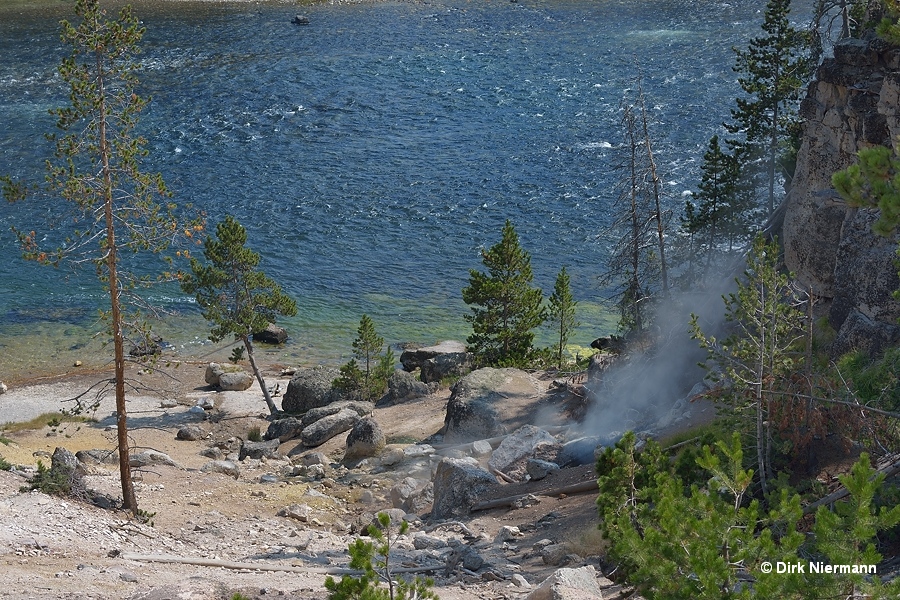
North of Sulphur Caldron the deep mud crater MVNN008 shows up. It captivates with an almost perfectly round, bulged rim.
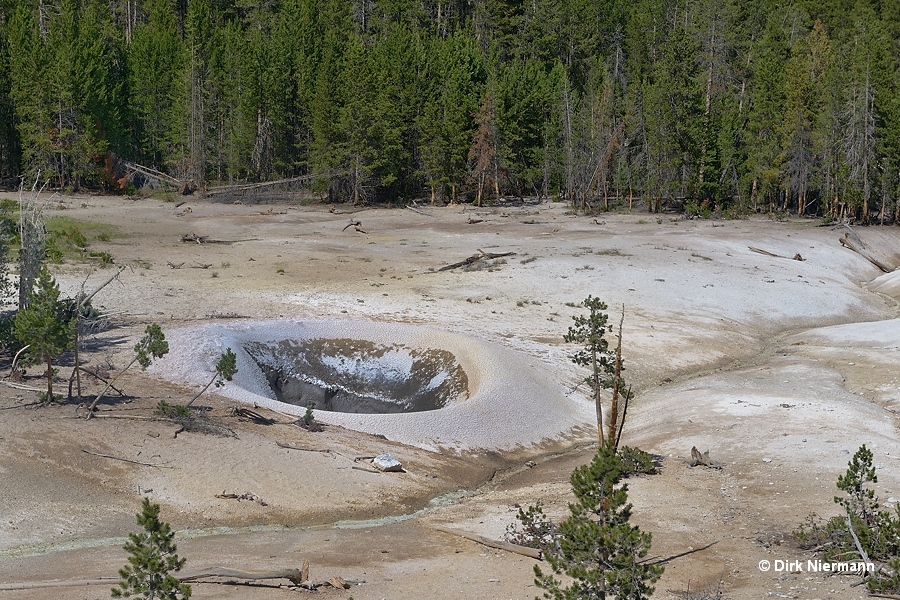
Turbulent Pool is the next notable feature of the cluster. With regard to appearance, activity, and acidity it is very similar to the former Sulphur Caldron.
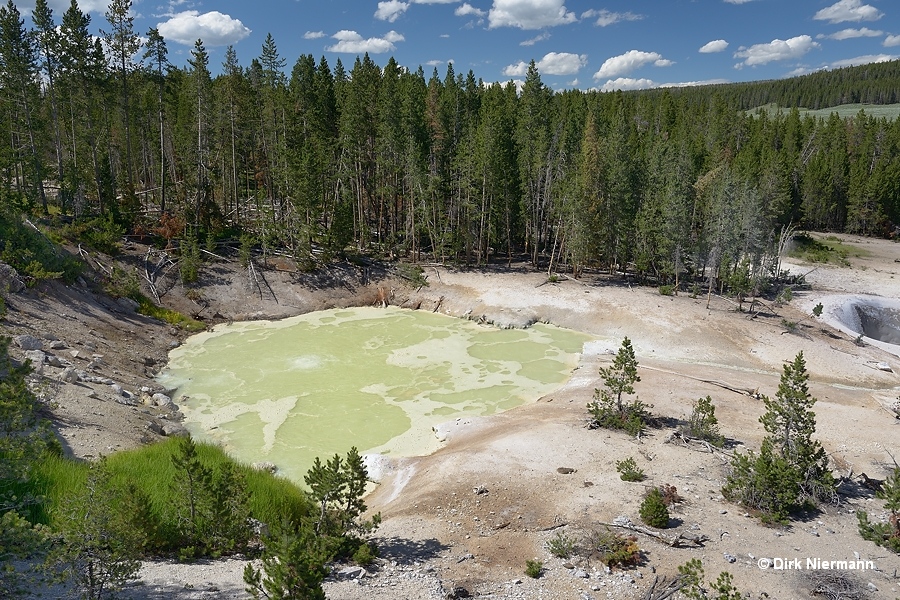
If you follow the Grand Loop Road beyond Turbulent Pool approximately 60 m (200 feet) in northwestern direction, a clearance with two unnamed boiling mud pots appears north of the road. The first one is designated as MVNN016.
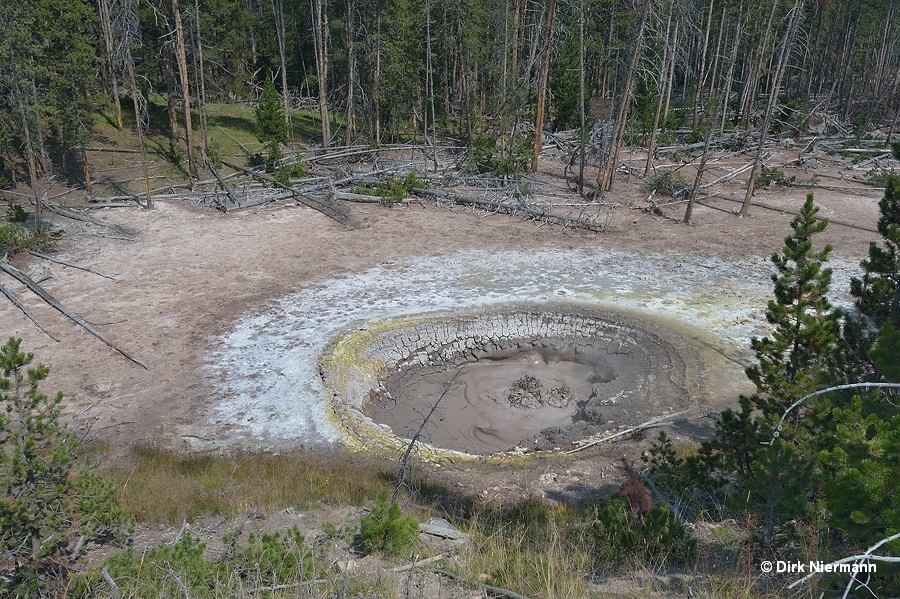
Its neighbor MVNN017 tries to hide behind a lodgepole pine tree.
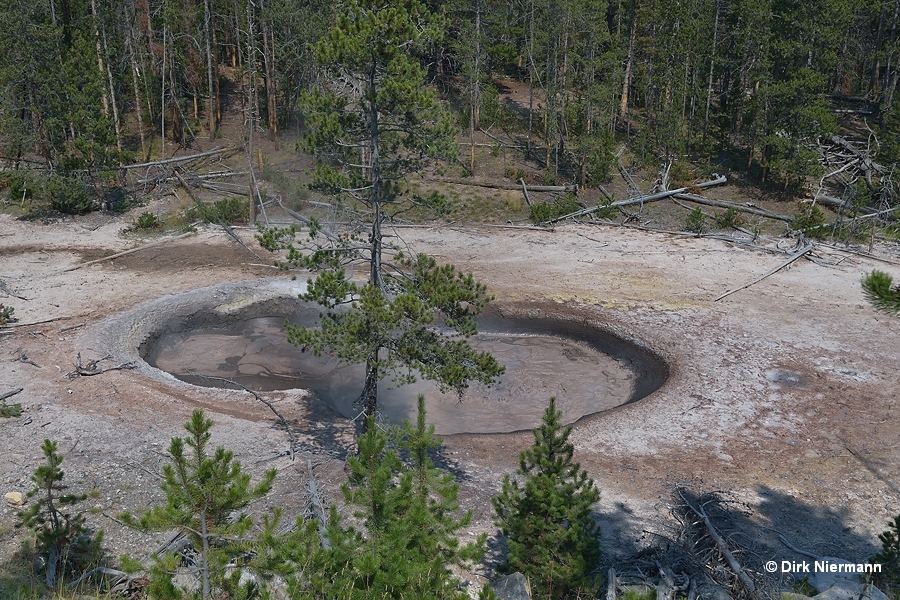
On the west side of the Grand Loop Road, across from Sulphur Caldron, a boardwalk will take you to the famous Dragon's Mouth Spring. Prior to 1994 it was a rich green spring, sending considerable surges of hot water out of its dark cave, which leads 6 m (20 feet) deep into the hill. Unfortunately, both the surging activity and the temperature have decreased since then, but Dragon's Mouth Spring still remains a spectacular sight.
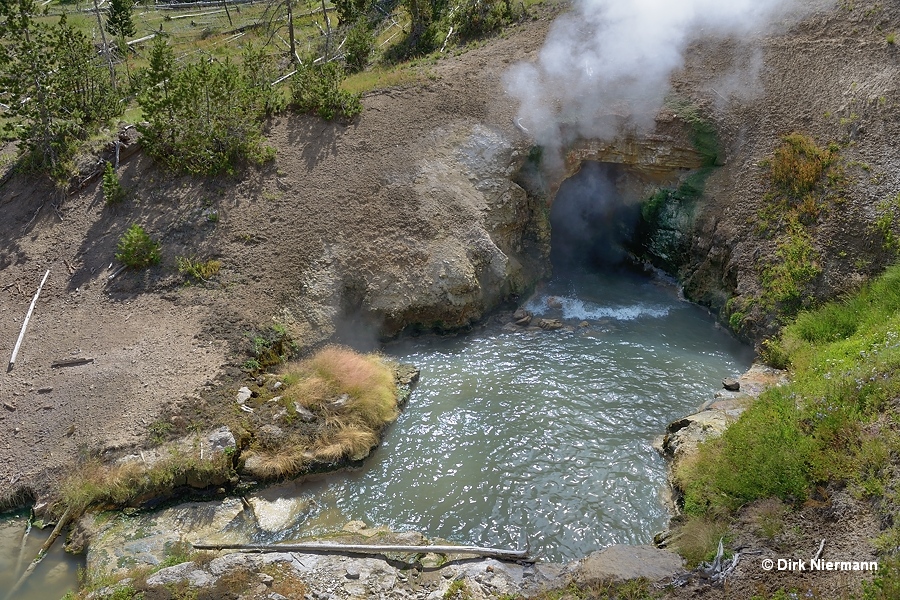
A short distance farther south the boardwalk passes Mud Volcano. In the 19th century it was a mud spouting, volcano-like cone, hence the name. Probably a landslide, whose cause may have been a steam explosion, formed the current setting. Mud Volcano acts as a perpetual spouter and erodes the slope with its activity more and more.
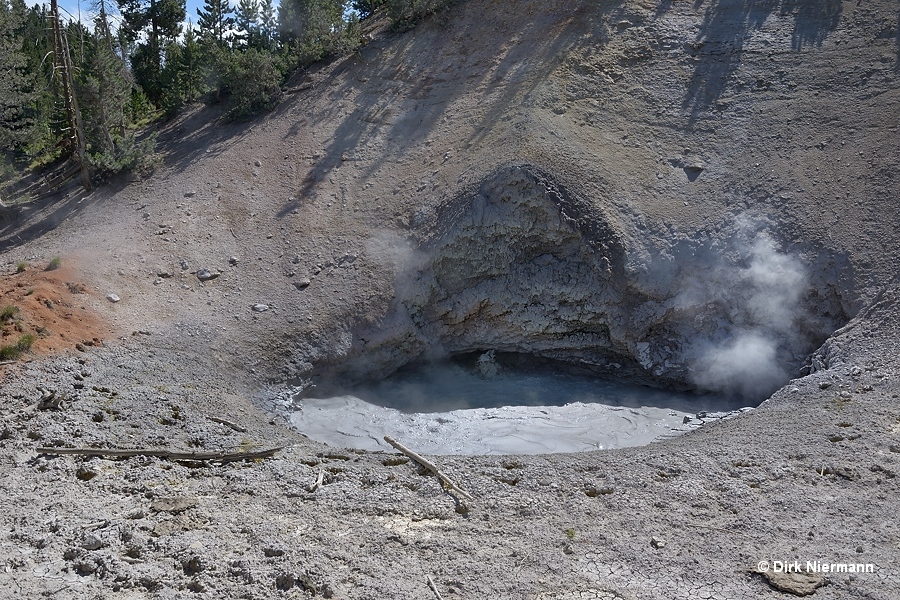
Next stop along the trail is the small Grizzly Fumarole. Depending on the amount of rain, the bear track-like pattern appears sometimes more pasty and sometimes more solid.
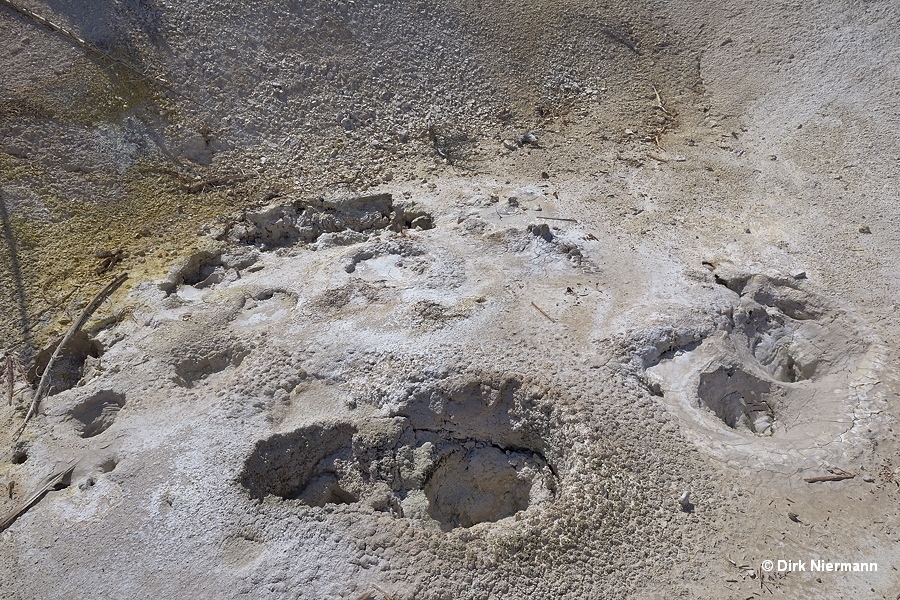
Subsequently the trail climbs the hill to open a view at Sour Lake. As the name implies, the lake is a strongly acidic feature (pH 2.5), even if it's not the most acidic one on location. The reason for the low pH is sulfuric acid, which is permanently generated by Sulfolobus acidocaldarius archaea.
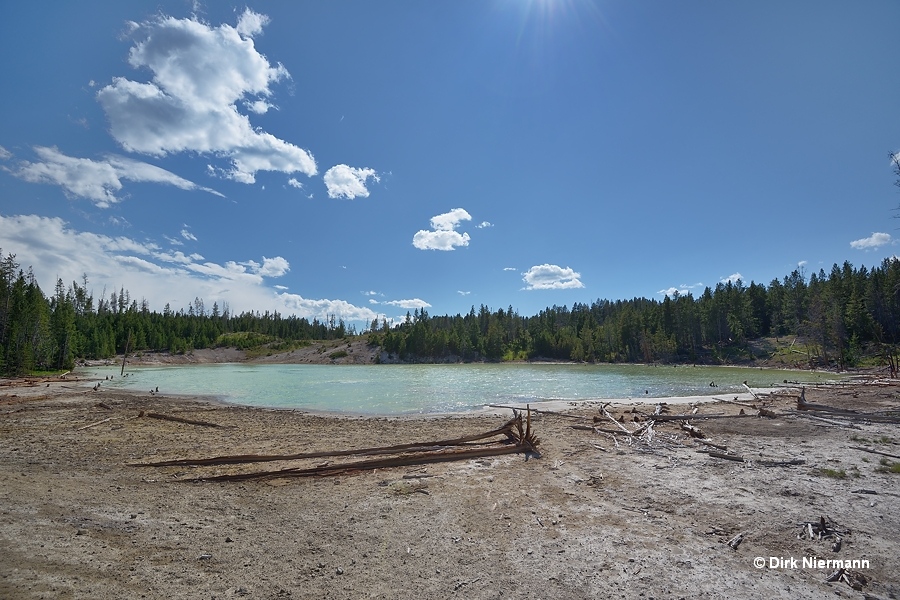
Black Dragon's Caldron, an even stronger acidic pool, is following on the southeast side. A heavy steam explosion in 1948 gave birth to the feature, tossing large trees and a lot of soil high into the air. The initial, vigorous spouting of hot mud more than 12 m (40 feet) high calmed down over the years and the pool filled up with acidic water increasingly. A strong, upwards directed current makes the position of the vent easily recognizable, but the initial expolsion took place in the northern part of the pool (in the photo on the righthand side) whereupon the vent gradually shifted southwards. Hence, the shape of the spring tells a lot about its history.
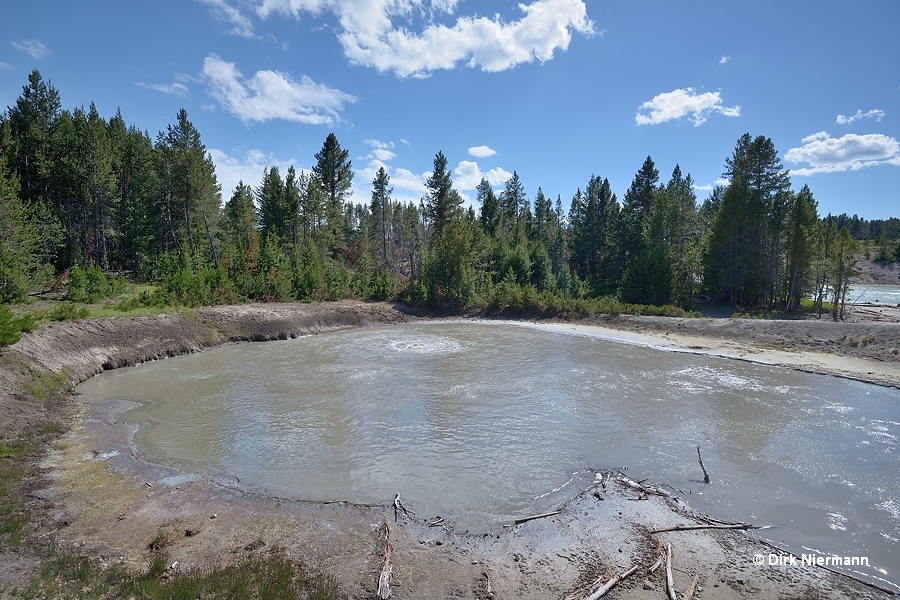
Page 1 2